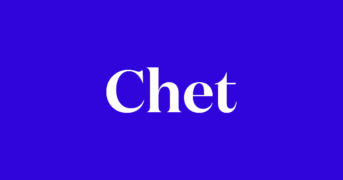
How Flawed is the Current Professional Development Mechanism?
Until a decade ago, professional development was almost entirely dependent on college education. Institutional education was seen as the only surefire way for young professionals to develop a successful career. However, the disconnect between traditional education and ‘on-the-job’ skills kept widening up to a point where huge numbers of young educated professionals were left unemployed, heartbroken and demotivated. A recent study revealed that only 51% of Americans see college as very important today. These numbers are an alarming indication that there is a desperate need to change the way we acquire knowledge. A failed education system puts the entire nation’s economic prosperity, global position as well as security at risk. But how did we get here?
Traditional education — the flaws
Expensive and Impractical
For the past several decades, college education has only become more expensive, creating a huge debt crisis for young unemployed students. Cuts in funding, inflation, and increased focus on construction have made college education increasingly impossible for a vast majority. The spend per student does not add up to the value created either for the student, or the economy. This has compelled many to question whether college is the right choice for them.
‘Scratch-the-Surface’ Approach
Classroom education involves studying at a stretch for several years, covering topics on anything and everything remotely related to a subject. Sessions are often not connected to one other, leading to an information overload with no room for practical implementation or learning. Each topic is covered with a scratch-the-surface approach and the student hardly gets to master any skill that might be relevant several years later when it’s time to work.
Professional development today, demands ‘going deep’ into each subject and its context. It requires prioritizing application based knowledge development in place of generalized topics. While almost every topic under the sun can be studied in detail for free today, thanks to the internet; there is a dire need for structured, yet flexible, applicable, relevant, and engaging learning mechanisms for the larger picture.
Current Innovations
The only substitute to traditional classroom learning available today are Massive Open Online Courses, or MOOCs. Udemy, Udacity, Coursera are some of the popular platforms offering online courses to students as an alternative to college degrees. While these courses offer some flexibility in terms of space and location; they hardly address the challenge of ineffective syllabuses or overall learning. It is simply a conglomeration of all courses in a digital format, made accessible to anyone with internet. However, they are neither flexible, nor free of cost. They charge a hefty amount (even though most content available out there is free!) and remain inaccessible without a credit card. Moreover, they continue with the traditional format of long boring lectures with little scope for actual learning.
Student Centric Learning — the New Norm
Professional development is a continual process of upgrading one’s knowledge and skills to keep up with evolving market trends. Rather than viewing it as professional growth, one needs to look at it as creating intrinsic value for oneself. Professional development must inspire creative and positive growth in our lives. Like any other kind of growth, professional growth is an ongoing and evolving experience.
Student-centered learning shifts the focus and responsibility from the teacher to the student. The idea is to develop independence, ownership and responsibility by allowing students to absorb only as much knowledge as they seek to find. To make this a reality, we’ve built a platform that offers step-by-step guides of micro-content curated by subject matter experts across a plethora of fields. Imagine learning designing from an Apple designer or project management from a Google’s project manager, absolutely free! We believe professional development should be as easy, fun and as engaging as reading an article or watching a Youtube video.
We believe this platform brings us a step closer to democratize professional opportunity by putting students’ interests first, and allowing them to choose when, how and what they wish to learn.


